Three most famous Central Vietnam cities to tourists are Da Nang, Hoi An and Hue. Da Nang has mesmerizing palm-lined beaches, marvelous mountains and romantic river banks. Seaside hotels and seafood restaurants are many to choose from here, with a more affordable price. 30km to the south, Hoi An was a trading port from 15th to 19th century and has been a world heritage site since 1999. It boasts of its title as “Vietnam’s most colorful towns”. Towards the north, travelers can learn so much about history in Hue, the former capital of the country. Hue cuisine is unique, diverse and sophisticated, including a lot of recipes for vegans. Dong Hoi, Quy Nhon and Da Lat are other cities that are often in traveler’s itinerary when visiting the region. In this article, we outline what a first timer may know before flying to Central Vietnam.
See also:
- Central Vietnam Food
- Central Vietnam Weather
- Central Vietnam Floods

Table of content
- 1 Da Nang City
- 2 Hoi An City
- 3 Hue City
- 4 Dong Hoi City
- 5 Da Lat City
- 6 Quy Nhon City
- 7 Related Posts
- 8 Non Nuoc Beach: The Famous Beach of Da Nang
- 9 How to Get from Da Nang to My Son Sanctuary
- 10 Bach Ma National Park: Hiking, Trekking in Da Nang and Hoi An
- 11 Hoi An Wet Season: What to Do in Hoi An When It Rains?
- 12 Thanh Ha Terracotta Park
- 13 Vinwonders Nam Hoi An Theme Park (formerly Vinpearl Nam Hoi An)
- 14 Am Phu Cave Complete Travel Guide
- 15 Hoi An or Hue: Which is Better?
- 16 Asia Park and Sun Wheel in Da Nang (Sun World Da Nang Wonders)
- 17 The Official Hoi An Travel Guide (MUST READ)
- 18 The Hoi An Market (Hoi An Central Market) Complete Guide
- 19 Hoi An Memories Show: The Best of Hoi An Impression Theme Park
- 20 How to Get to Golden Bridge from Da Nang
- 21 Hoi An Bridge: Famous Bridges in Hoi An
- 22 Da Nang Food Specialties: What to Eat in Da Nang
- 23 How to Get From Hoi An to My Son Sanctuary
- 24 Hoi An’s Chinese Assembly Halls and Chinese Temples
- 25 Hoi An Walking Tours: Heritage, Foods, Photography & Locals
- 26 Hoi An Self Guided Walking Tour (Hoi An By Yourself)
- 27 How to Visit Golden Bridge Vietnam
- 28 Da Nang Shore Excursions: Guided Tours From Tien Sa Port
- 29 Unique Experiences in Hoi An and Why?
- 30 Han Market (Cho Han): Where to Shop in Da Nang?
- 31 An Bang Beach: A Guide to Hoi An’s Best Beach
- 32 Experiences in Hoi An: Get Insight Into Hoi An’s Local Culture
- 33 Da Nang Cathedral (Da Nang Pink Church)
- 34 Things to Do in Ba Na Hills Besides Golden Bridge
- 35 Hoi An Nightlife: What to Do in Hoi An At Night?
- 36 Hoi An Countryside: Villages, Rice Fields & Tours
- 37 How to Get to Golden Bridge From Hoi An
- 38 Hoi An Entrance Fee: Old Town, Golden Bridge, My Son, More
- 39 Hoi An Airport: Everything You Need to Know
- 40 Hoi An Lantern Boat Ride on Hoai River
- 41 Da Nang Half Day Tours
- 42 Hoi An Private Car and Driver
- 43 Da Nang Private Car and Driver
- 44 What to Do in Hoi An Ancient Town
- 45 Da Nang and Hoi An Itinerary for Visitors Staying Overnight in Hoi An
- 46 Hoi An 3 Day Itinerary: A Travel Plan for 3 Days in Hoi An
- 47 Hoi An Free Things to Do: Budget Travel in Hoi An Vietnam
- 48 Hoi An One Day Itinerary: A Travel Plan for One Day in Hoi An
- 49 Da Nang Things to Do: Guide to What to Do in Da Nang Vietnam
- 50 Da Nang Best Things to Do and Reasons
- 51 Hoi An Half-Day Tours: Guide to Half Day Trips From Hoi An
- 52 Hoi An Day Tours: A Guide to Best Day Trips From Hoi An
- 53 Hoi An Beach: A Guide to All Beaches in Hoi An Vietnam
- 54 Hoi An Food Specialties
- 55 How to Get From Hoi An to Da Nang
- 56 Hoi An Cheap Things to Do: All Solo Travelers Need to Know
- 57 Hoi An Best Things To Do: Recommendations from Local Experts
- 58 Hoi An Things to Do: All What Can You Do in Hoi An Vietnam
- 59 Hoi An Things Not to Miss: A Guide to Must Do in Hoi An
- 60 Hoi An or Da Nang: Which is Better?
- 61 Hoi An Pottery Village: A Guide to Thanh Ha Pottery Village
- 62 Hoi An Ancient Town Tour
- 63 Hoi An Old Town Ticket: Price, Sellers, Included Sites, More
- 64 My Son Sanctuary Tour
- 65 Hoi An Lanterns: Festival, Making Class, Where to Buy, More
- 66 Hoi An Best Area to Stay: Guide to Where to Stay in Hoi An
- 67 Hoi An Weather by Month: Guide to Hoi An Monthly Weather
- 68 Da Nang Best Area to Stay: Guide to Where to Stay in Da Nang
- 69 Da Nang Cave Tour: Best Underground Activities in Da Nang
- 70 Da Nang Best Time to Visit: Guide to Best Weather in Da Nang
- 71 Da Nang Weather by Month: Guide to Monthly Weather in Da Nang
- 72 What to Do in Da Nang At Night
- 73 Lang Co Vietnam Travel Guide
- 74 Hoi An River Cruise: Guide to The Best Boat Tour in Hoi An
- 75 What to Do in Da Nang for 3 Days
- 76 Hoi An Old Town Boats: Guide to Boat Rides in Hoi An Town
- 77 Hoi An 2 Day Itinerary: Traveler Guide to 2 Days in Hoi An
- 78 Cham Island Hoi An
- 79 Hoi An Basket Boat Ride
- 80 Hoi An Coconut Village: A Guide to Cam Thanh Coconut Village
- 81 My Khe Beach: A Complete Guide to Da Nang’s Best Beach
- 82 Da Nang Day Trips: Guide to Best Day Tours From Da Nang
- 83 Museums in Da Nang
- 84 Linh Ung Pagoda: Trio of Da Nang’s Holiest Mountain Temples
- 85 Da Nang Night Market: A Thing To Do in Da Nang at Night
- 86 Guide to Son Tra Mountain aka Monkey Mountain Vietnam
- 87 Ba Na Hills Tour
- 88 Hoi An Cham Temples: My Son Sanctuary & Quang Nam Temples
- 89 Da Nang Cable Car
- 90 How to Get from Da Nang Airport to Hoi An
- 91 Da Nang to Hoi An: Best Da Nang Airport Transfer and More
- 92 Hoi An Tour Guide: How to Find a Private Tour Guide in Hoi An
- 93 Hoi An Ancient Town Attractions
- 94 Hai Van Pass Da Nang: Map, Route, Weather, History, Tour
- 95 Hoi An Old Town Map
- 96 Tra Que Vegetable Village
- 97 Hoi An Lantern Festival
- 98 Hoi An Night Market: A Thing to Do in Hoi An at Night
- 99 Da Nang Attractions Guide: What to See in Da Nang Vietnam?
- 100 Lady Buddha Da Nang: The Best of Monkey Mountain Vietnam
- 101 My Son Sanctuary Travel Guide
- 102 Da Nang Museum of Cham Sculpture
- 103 Dragon Bridge Da Nang: The Fire-Breathing Da Nang Bridge
- 104 Ba Na Hills Travel Guide: A First Timer’s Complete Guide
- 105 Golden Bridge Da Nang: A Guide to The Iconic Da Nang Bridge
- 106 Da Nang Bridge: A Guide to Famous Bridges in Da Nang
- 107 Ba Na Hills Cable Car: World Record, Cost, Reschedule, Map
- 108 Featured Tours and Experiences
- 108.0.1 Golden Bridge and Ba Na Hills Night Tour
- 108.0.2 Golden Hands Bridge Tour In Sunrise or Sunset (1/2 Day)
- 108.0.3 Cam Kim Island Bicycle Tour From Hoi An
- 108.0.4 Cham Island Tour From Hoi An (Group Tour)
- 108.0.5 Cham Island Tour From Da Nang (Group Tour)
- 108.0.6 Hoi An Vegetarian Food Tour
- 108.0.7 Hoi An Evening Walking Food Tour Through Laneways
- 108.0.8 Private Hoi An Basket Boat Tour (Shuttle Bus, Bicycle, Bike)
- 108.0.9 Half-day Am Phu Cave Tour (Private)
- 108.0.10 Hoi An Countryside Tour (Bicycle, Car, Electric Shuttle)
- 108.0.11 Da Nang Tour Package From Singapore
- 108.0.12 Hoi An Evening Tour From Da Nang
- 108.0.13 Hoi An Walking Food Tour Through Laneways
- 108.0.14 My Son Sanctuary and Hoi An Old Town Tour with Thu Bon River Cruise
- 108.0.15 My Son Day Trip From Hoi An including Marble Mountains and Basket Boat
- 108.0.16 Half Day Hoi An City Tour With River Cruise
- 108.0.17 Son Tra Peninsula Tour with Marble Mountains (Private/Small Group)
- 108.0.18 Hue Day Trip From Hoi An with Hai Van Pass, River Cruise & Lunch
- 108.0.19 Hoi An Ancient Town and Countryside Tour (Bests of Hoi An Tour)
- 108.0.20 Hoi An Tour From Da Nang Airport (Private, Optional Lunch)
- 108.0.21 Hoi An Day Trip From Da Nang (Marble Mountains, Basket Boat, Old Town)
- 108.0.22 Da Nang City Tour From Airport (Private, Optional Lunch)
- 108.0.23 Hoi An City Tour with Lantern Class, Lantern Boat, Night Market & Local Food Sampling
- 108.0.24 Marble Mountains, Basket Boat Ride & Hoi An Old Town Walking Tour
- 108.0.25 Marble Mountains & Golden Bridge Day Tour with Buffet Lunch
- 108.0.26 Marble Mountains & Monkey Mountain Tour (Half-day, Private)
- 108.0.27 Private Golden Bridge Sunrise Tour (Half-day, Optional Lunch)
- 108.0.28 Hoi An Ancient Town & Golden Bridge Day Tour (Private/Small Group)
- 108.0.29 My Son Sanctuary & Golden Bridge Day Tour (Private/Small Group)
- 108.0.30 Private My Son Sanctuary Sunrise or Sunset Tour
- 108.0.31 Full Day Hoi An Ancient Town & Countryside Experience With Local
- 108.0.32 Full Day My Son Sanctuary & Hoi An Countryside Tour With Local
- 108.0.33 Full Day Hoi An Ancient Town & Coconut Village Experience
- 108.0.34 Son Tra Peninsula, Marble Mountains and Hoi An City Tour
- 108.0.35 Half-day Marble Mountains Tour from Da Nang or Hoi An
- 108.0.36 Da Nang Cave Tour (Half Day Underground Tour in Da Nang)
- 108.0.37 Hoi An Old Town & Lantern Making Class (Morning Tour, Half-day)
- 108.0.38 Full Day Bests of Da Nang & Hoi An Old Town Walking Tour
- 108.0.39 Full Day My Son Tour From Da Nang with Da Nang City Tour
- 108.0.40 My Son Sanctuary Tour From Hoi An or Da Nang With Local Guide
Da Nang City
Going to travel Da Nang? Read our comprehensive travel guide to the city to design the easiest itenerary possible, in centralvietnamguide.com/da-nang-travel-guide.
Da Nang Introduction
Da Nang is the capital of Central Vietnam and also a well-known tourist city. Han river flows through its downtown, is crossed by nine bridges that run from the airport to the Pacific coast. Surrounded around the core, there are awe-inspiring mountains and hills, many of which are the best attractions of the whole region. This Central Vietnam city is also famous for being worth living, thanks to positive and magical transformation in recent decades. Today, it’s still one of the most happening ones and people often tag it as “the Little Singapore” to allude to its story. Because of being the base of the airport and other transportation hubs, travelers come here first. Packaged tours usually depart from Da Nang.
–Location: 1,5hrs fly from Ho Chi Minh city, 1hr and 15 minutes fly from Hanoi, 100 km south of Hue and 30 km north of Hoi An.
–Population: 1,1 millions (most populous in all Central Vietnam cities)
–Facilities (to serve tourists): Da Nang international airport, Da Nang railway station, central and southern bus stations, Tien Sa port.

Da Nang Tourist Attractions
-The Marble Mountains: a group of five spectacular marble hills emerging suddenly on the flat plain. Each hill has Buddhist temples and caves. The most visited one is Thuy Son where two of Da Nang’s oldest pagodas and best grottoes are located. Know further information in centralvietnamguide.com/marble-mountains-vietnam.
–Ba Na Hills: At an elevation of over 1,500 meters, world’s longest cable car, always-blooming flower gardens, a huge French village, a themed park, Linh Ung pagoda and outdoor performances are main interests. Know more details in centralvietnamguide.com/ba-na-hills.
–The Golden Bridge: Opened for tourists from 2018, this pedestrian bridge is located in the Ba Na hills. It’s holded by two giant hands and has gold-plated handrails. Instagrammers always have at least one picture here for social media. See further information in centralvietnamguide.com/golden-bridge-vietnam.
-Hai Van Pass: This 20km-long mountain pass provides breath-taking scenery from towering mountains to the sea. Riding a motorbike is the best way to explore it and it has become a favorite of many locals and tourists. Know more details in centralvietnamguide.com/hai-van-pass.
–Da Nang Museum of Cham Sculpture: Established in 1919 by French archeologists, this place is home of the largest collection of Champa kingdom’s sculptures in Vietnam now. Read details in centralvietnamguide.com/da-nang-museum-of-cham-sculpture.
–Dragon Bridge: Every Saturday and Sunday, this dragon breathes fire and water, making it a must-see place by night on the weekend. Read details in centralvietnamguide.com/dragon-bridge-da-nang.
–My Khe Beach: is a long stretch of sand in Da Nang’s east coastline, edged by clear waters and backed by coconut palms. Forbes magazine voted it as one of the world’s sexiest beaches. Plenty of hotels and restaurants line the boulevard nearby. Know more details in centralvietnamguide.com/my-khe-beach-da-nang.
–The Lady Buddha: this statue boasts of its 67 meters from the surroundings, the largest height for the kind in Vietnam. Facing the city, locals believe that she patronizes fisherman safety. See more details in centralvietnamguide.com/lady-buddha-da-nang.
–Son Tra Mountain: Rising up to 700 meters, this is also known as the Monkey mountain by the American soldiers in the Vietnam war. Its unspoiled forests are home of a wealthy wildlife, including red-shanked douc, one of world’s rarest primates. See further information in centralvietnamguide.com/son-tra-mountain.
–Da Nang Cathedral: also known as the Pink church because of its pink color. This is only of the kind built during French colonial time. Know more details in centralvietnamguide.com/da-nang-cathedral.

Hoi An City
Going to travel Hoi An? Read our comprehensive travel guide to the city to design the easiest itenerary possible, in centralvietnamguide.com/hoi-an-travel-guide.
Hoi An Introduction
30km south of Da Nang airport, Hoi An is one of the best-known Central Vietnam cities by international tourists. It has lots of things that mesmerize travelers at their first sight. In its center, the Old town with thousands of well-protected buildings was recognised by Unesco in 1999. Around lantern-lit streets there, remains left by different nationalities are visible, including the Japanese bridge or Chinese temples. Lively markets, restaurants, cafes, souvenir shops and tailors dot the quarters also. At night, measureless colorful lanterns light on, making Hoi An become such sparkling and glorious.
Short drive from this Unesco recognition, travelers can lounge on white-sandy beaches, explore maze-like palm forests by a basket boat or cycle around quaint rural villages. Reaching further, My Son sanctuary hidden away in the jungle and Cham islands marine park are other stunners. Hoi An is famous for diverse cuisine and its signature dish is cao lau, a bowl of chewy noodles topped with sliced char siu pork and raw vegetables.
–Location: 45mins drive from Da Nang (and its airport) and 2,5 to 3 hrs from Hue. 1,5hrs from Chu Lai airport with a few flights from Hanoi and Ho Chi Minh city.
–Population: 120,000 people
–Facilities (to serve tourists): Hoi An bus station, Cua Dai harbor (for Cham island speed boats)

Hoi An Tourist Attractions
–Hoi An Ancient Town: Served as a trading port from 15th to 19th centuries, nowadays this town has become the best-preserved of the kind. Its streets and yellow-wall houses are decorated by lanterns, and become very mind-blowing at night. Visitors love to stroll or cycle around, try local foods, get custom made suits and take pictures here. Read its ultimate guide in centralvietnamguide.com/hoi-an-old-town.
–An Bang Beach: 4km north of Hoi An old town, this stretch of white sand is the best choice for lounging on the beach and dine out with fresh seafood. Live music is available in some beachfront venues. Read more information in centralvietnamguide.com/an-bang-beach-hoi-an.
–My Son Sanctuary: surrounded by a ring of forested mountains, this is a complex of Hindu temples dating back from 4th century. It’s recognized as a Unesco heritage in 1999. See details in centralvietnamguide.com/my-son-sanctuary.
–Cham Islands: a group of 8 islands off the Hoi An’s coast that is not a stranger to snorkelers and divers around the country. Its marine park is amid the earliest-established ones. Know more details in centralvietnamguide.com/cham-island-hoi-an.
–Tra Que vegetable village: between Hoi An old town and An Bang beach, farmers here still use organic techniques to produce the best quality vegetables for the market. Tra Que herbs are a must for several local foods. Tourists often visit to join “farming experience” and cooking class. See details in centralvietnamguide/tra-que-vegetable-village.
–The Precious Heritage by Rehann: a lively exhibition of art photos taken by Rehann, a French expat photographer and traditional costume of all Vietnam’s ethics. Read details in centralvietnamguide.com/hoi-an-art-galleries.
–Hoi An pottery village: by a river, this 400-years-old village produced potteries to export when the town was busy in trading. Now, potteries are still made and the techniques are taught to tourists. A terracotta museum is recently-built here. See more in centralvietnamguide.com/thanh-ha-pottery-village.

Hue City
Going to travel Hue? Read our comprehensive travel guide to the city to design the easiest itenerary possible, in centralvietnamguide.com/hue-travel-guide.
Hue Introduction
Some 100km to the north of Da Nang and Hoi An, Hue is cut into two parts by the Perfume river which flows from the Bach Ma national park. The left bank has the Citadel where the seat of power of the Nguyen emperors who ruled the country in 19th and 20th centuries, is based. Within this wall, there are two others, called the Imperial city and the Forbidden purple city respectively.
On the opposite bank, French buildings and modern residential areas are around, including the Walking streets (best nightlife spot). In the upstream of the river, religious temples and king mausoleums are built to serve spiritual life of the royal family. Hue is also known for the most sophisticated cuisine, compared to other Central Vietnam cities. Variety of food specialties and vegetarian dishes are the city’s prides.
-Location: 2hrs by bus and car from Da Nang and 2,5hrs from Hoi An. one hour and 15 minutes by airplane from Hanoi and 1,5hrs from Ho Chi Minh city airport.
-Population: 650,000 people, 90% of which live in urban areas.
-Facilities (to serve tourists): Phu Bai international airport, Hue railway station, Hue bus stations and Chan May port (55km from the center).

Hue Tourist Attractions
– Hue Imperial City (the Citadel): near Perfume river, this is the second wall of the Citadel where the Nguyen dynasty’s kings ruled Vietnam from 1802 to 1945. Accessed by four gates, royal palaces, ancestor temples, residences, theater, lakes and gardens are built inside. The Forbidden purple city stands in its middle. Read details in centralvietnamguide.com/hue-imperial-city.
– Royal tombs: including 7 mausoleums for emperor of Gia Long (the 1st), Minh Mang (the 2nd), Thieu Tri (the 3rd), Tu Duc (the 4th), Duc Duc (the 5th), Dong Khanh (the 9th) and Khai Dinh (the 12nd). All have grand architecture and are included in the Unesco list. Read more information in centralvietnamguide.com/hue-tombs.
– Thien Mu pagoda: this Hue’s oldest Buddhist temple takes its name from a local story about a celestial lady who usually appears on its hilltop. Commissoned by the emperor and his wifes, its architecture is imposing, including a tall octagonal brick tower. Read more in centralvietnamguide.com/thien-mu-pagoda.
– Dong Ba market: Being the biggest market of the city, this draws plenty of tourists to visit, admire delicious local foods and buy souvenirs at a moderate price. See details in centralvietnamguide.com/dong-ba-market.
– The Abandoned water park: Recently mentioned by some magazines as one of the world’s scariest places, this forgotten water park has a huge dragon in Thuy Tien lake. See further information in centralvietnamguide.com/hue-tourist-attractions.
– Thanh Toan bridge: built in 1776, this tiled-roof bridge is the icon of Hue’s peaceful countryside. Near it, there is an agricultural tools museum, good to know about local farming. Read more in centralvietnamguide.com/thanh-toan-bridge.
– Bach Ma national park: a meeting place between northern and southern ecoregions, this intact forest is the richest wildlife in Central Vietnam. It has a waterfall flowing down from the top of a 300-meters-high cliff. See further information in centralvietnamguide.com/bach-ma-national-park.

Dong Hoi City
By both river and the sea, Dong Hoi is the provincial capital of Quang Binh, hometown of Phong Nha-Ke Bang national park (known as the Kingdom of cave”). Because of owning an airport, almost all cave explorers come here before starting their expedition into the world’s largest caverns. Its beaches are quieter than many others in Central Vietnam cities to the south. During the most recent war, American air forces dropped bombs around it and destroyed buildings, as its near-DMZ location. The ruined church Tam Toa in the riverside promenade, is the best reminder.
-Dong Hoi tourist attractions: Dong Hoi citadel, Quang Binh Quan gate, Nhat Le beach, Ham Ninh beach, Quang Phu sand dunes, Nhat Le river
Da Lat City
Amongst Central Vietnam cities, Da Lat is located in the largest elevation, over 1,500 meters above sea level. It’s discovered by Alexandre Yersin, a swiss doctor living in Vietnam and became a leisure city in last years of the 19th century. Travelers love its mild weather all year round, always-blooming flower gardents, hills with endless pine forests, white-water waterfalls, trekking trails and more. Today, this mountain city is home of around 500,000 people and visited by at least 5 million of tourists yearly.
-Da Lat tourist attractions: Datanla waterfall, Lang Biang mountain, the Crazy house, Linh Phuoc pagoda, Dalat flower park, Thien Vien Truc Lam, Elephant falls, Da Lat railway station, the Valley of love, Tuyen Lam lake, Da Lat market, Xuan Huong lake, Bidoup-Nui Ba national park.

Quy Nhon City
Surrounded by pretty mountains, Quy Nhon is over 320 km south of Da Nang and Hoi An. It’s famous for a long urban beach, lots of yummy local foods (especially banh xeo pancake), martial arts and ancient Cham towers. In its southern margin, Bai Xep beach is a popular spot to relax for jet setters and frequently visited by expats and foreign tourists. With a population of nearly 500,000 residents, this is one of the biggest Central Vietnam cities.
-Quy Nhon tourist attractions: the Twin towers, Ghenh Rang (the Queen beach), Ky Co beach, the Wind waist (Eo gio), Banh It towers, Thi Nai lagoon, Ong Nui pagoda, FLC safari park, Hon Kho island, Cu Lao Xanh island.

Related Posts
Non Nuoc Beach: The Famous Beach of Da Nang
Besides the Golden hands bridge – a global hit, Da Nang city also has beautiful beaches. If looking for somewhere great to stay and have a slow holiday, Non Nuoc
How to Get from Da Nang to My Son Sanctuary
Known as ‘the Angkor Wat of Vietnam’, My Son sanctuary boasts of its sophisticated temples dating back from 4th century. Sadly, in 14th century, it’s abandoned in the forests. Today,
Bach Ma National Park: Hiking, Trekking in Da Nang and Hoi An
Two best places for trekking and hiking in and near Da Nang are Son Tra mountain (peninsula) and Bach Ma national park. Which one is better is actually personal because these
Hoi An Wet Season: What to Do in Hoi An When It Rains?
No beach, no pool, no outdoor adventures? What to do in Hoi An when it rains? This is a very popular question from travelers who come to Vietnam in the
Thanh Ha Terracotta Park
Between 15th and 19th centuries, Hoi An was one of major stopovers for sailing merchants to trade in Southeast Asia. Meanwhile, craftspeople in its Thanh Ha village produce high-quality pottery
Vinwonders Nam Hoi An Theme Park (formerly Vinpearl Nam Hoi An)
In addition to historical and cultural attractions, nowadays Hoi An also has a couple of amusement parks to entertain. Definitely, they’re ideal places for families with children and groups of
Am Phu Cave Complete Travel Guide
Although in the Marble mountains – the most visited attraction in Da Nang, travelers often miss Am Phu cave. One of reasons is that it’s mentioned much online and not
Hoi An or Hue: Which is Better?
Both Hoi An and Hue cities are in the middle of Vietnam, and they’re not far from each other (about 130 km). Therefore, for those who travel from north to
Asia Park and Sun Wheel in Da Nang (Sun World Da Nang Wonders)
Have you ever seen the wheel of Da Nang? That is the Sun Wheel. It’s a part of greater Asia Park – an amusement park with a heap of fun
The Official Hoi An Travel Guide (MUST READ)
By the estuary of Thu Bon river, Hoi An is one of the best places to visit in Vietnam. This Vietnamese town is a package for travelers – a pretty
The Hoi An Market (Hoi An Central Market) Complete Guide
The Hoi An Market is the first market in Hoi An ever. Over centuries, it’s still the largest market in town although the town has a much bigger size than
Hoi An Memories Show: The Best of Hoi An Impression Theme Park
The Hoi An Memories Show is a famous series of outdoor performances in Hoi An at the present time. Thanks to its exceptional production and great cultural stories, it becomes
How to Get to Golden Bridge from Da Nang
The Golden Bridge (aka the Golden Hands Bridge) in Da Nang is a must visit attraction in Vietnam today. Many foreign travelers come to the city, just because they love
Hoi An Bridge: Famous Bridges in Hoi An
Hoi An has many bridges because it’s located at the confluence of 3 rivers: Thu Bon river, De Vong river and Truong Giang “Long river”. The distributaries of these rivers
Da Nang Food Specialties: What to Eat in Da Nang
Da Nang is known as a food capital of central Vietnam. This city boasts many yummy dishes, prepared by distinctive recipes and some of them are famous all over the
How to Get From Hoi An to My Son Sanctuary
My Son sanctuary is one of the most popular places to visit for tourists staying overnight in Hoi An, especially those who spend many days there. It’s known for a
Hoi An’s Chinese Assembly Halls and Chinese Temples
Chinese people migrated to Hoi An from the early 17th century. Today, Chinese communities as a whole are the second most important piece to form the town’s unique culture. The foremost
Hoi An Walking Tours: Heritage, Foods, Photography & Locals
Strolling around heritage quarters with a local guide is the activity that so many travelers love to do in Hoi An. It enriches their time in this lovely town. Firstly,
Hoi An Self Guided Walking Tour (Hoi An By Yourself)
Hoi An old town is friendly for pedestrians, especially during the time that motorized vehicles (scooters, cars, etc) are prohibited to move around its heritage quarters. That is safe for
How to Visit Golden Bridge Vietnam
The Golden Hand Bridge of Ba Na hills today is a dream place to visit for many travelers. Since it opened in June 2018, millions of people have set their
Da Nang Shore Excursions: Guided Tours From Tien Sa Port
Da Nang Vietnam today is one of stopovers for many cruises that travel from continent to continent, from country to country. It owns an ideal seaport to moor and it
Unique Experiences in Hoi An and Why?
Today, travelers seek more experiences in the destination they go to. They want to have a deeper understanding about the culture of local people and interact with them. No other
Han Market (Cho Han): Where to Shop in Da Nang?
In the heart of Da Nang, the Han market is a popular place for visitors to buy something to bring home due to the diversity of merchandise. Back to history,
An Bang Beach: A Guide to Hoi An’s Best Beach
An Bang beach now becomes a popular tourist attraction in Hoi An. It may be the best known and most convenient to reach from the town’s centre. Not only tourists,
Experiences in Hoi An: Get Insight Into Hoi An’s Local Culture
As the most unique Vietnamese town, Hoi An is definitely worth visiting. Here, visitors have many things to do and experiences for their holiday time. Everyone knows that it has
Da Nang Cathedral (Da Nang Pink Church)
Da Nang became a French protectorate on 3rd October 1888, under the name “Tourane”. By the Han river, the colonists designed a grid of streets with public buildings, a city hall,
Things to Do in Ba Na Hills Besides Golden Bridge
According to local authorities, 50% of visitors coming to Da Nang and Hoi An visit the Ba Na hills. In other words, that is nearly 10 millions of people. This
Hoi An Nightlife: What to Do in Hoi An At Night?
After dark, Hoi An becomes exceptionally spectacular. If planning to stay overnight or visiting this ancient heritage town, at least travelers know that it’s “decorated” by so many colorful lanterns.
Hoi An Countryside: Villages, Rice Fields & Tours
By the coast, Hoi An is at the confluence of 3 rivers: Thu Bon river, Truong Giang river and De Vong river. This economically strategic location has supported trading activities
How to Get to Golden Bridge From Hoi An
There are many travelers visiting the Golden bridge from Hoi An. Both the bridge and the town today are must-see places in the region, so staying overnight in the town
Hoi An Entrance Fee: Old Town, Golden Bridge, My Son, More
Are you planning to visit Hoi An? And you don’t know how much cash you need to prepare for visiting places? This article lists tourist attractions in Hoi An and
Hoi An Airport: Everything You Need to Know
Hoi An is a famous tourist city in Vietnam. It’s 800 kilometers away from Hanoi, the capital of Vietnam and nearly 1,000 kilometers from Ho Chi Minh city, the biggest
Hoi An Lantern Boat Ride on Hoai River
A lantern boat ride is a thing to do that visitors must do today in Hoi An. For many centuries, locals have taken it on the Hoai river by the
Da Nang Half Day Tours
In addition to day trips, travelers have many options of half-day tours in Da Nang to choose from. Not to spend a full day at different places, maybe far from
Hoi An Private Car and Driver
Hoi An is one of the most popular tourist destinations in Vietnam. In the busiest year, it attracts about 9 millions visitors who come to enjoy its charming beauty, rich
Da Nang Private Car and Driver
Your next holiday destination is Da Nang? You prefer to travel by yourself? Hiring a private car is one of the best options for you to explore with freedom, flexibility
What to Do in Hoi An Ancient Town
Hoi An Ancient Town is a must see, not only thanks to its world heritage title, but also to its vintage urban landscape, lots of attractions and activities. In the
Da Nang and Hoi An Itinerary for Visitors Staying Overnight in Hoi An
Da Nang and Hoi An are twin cities in the heart of Central Vietnam. Both are popular tourist destinations for either domestic or international visitors, and share many similarities. Due
Hoi An 3 Day Itinerary: A Travel Plan for 3 Days in Hoi An
3 days are a perfect duration to stay overnight in Hoi An and explore captivating places in and around it. Especially for those who travel from city to city or
Hoi An Free Things to Do: Budget Travel in Hoi An Vietnam
Travelers should know free things to do in Hoi An, to save the budget for this wonderful city and by that, can stay longer to explore. From old town, countryside
Hoi An One Day Itinerary: A Travel Plan for One Day in Hoi An
From a backwater town in the 1990s, Hoi An today is one of leading tourist destinations across Vietnam. In a recent year, it attracted 8,5 millions of overnight visitors and
Da Nang Things to Do: Guide to What to Do in Da Nang Vietnam
Unquestionably, Da Nang deserves a holiday trip from all types of traveller. Firstly, due to the weather. It has a longer sunny time than the north but less hot than
Da Nang Best Things to Do and Reasons
Da Nang is the largest tourist center in Central Vietnam. It owns fascinating natural and cultural places that attract both Vietnamese and foreigners. In the busiest year, this city of
Hoi An Half-Day Tours: Guide to Half Day Trips From Hoi An
Top attractions near Hoi An require a couple of hours or half a day, to get there and visit around. The reason is that all have many things to see,
Hoi An Day Tours: A Guide to Best Day Trips From Hoi An
Near Hoi An, there are many fantastic places making travelers can’t stay in the room and have to go out to explore. Appeal Golden bridge – the new world wonder,
Hoi An Beach: A Guide to All Beaches in Hoi An Vietnam
Not only an old town, Hoi An has beaches as well! That are sandy, edged by tropical water and lined by palm forests. Travelers don’t need to wait or move
Hoi An Food Specialties
Hoi An is a melting pot where people from different parts of Vietnam and countries in the world have gathered and exchanged their cultures. As a result, this town has
How to Get From Hoi An to Da Nang
Da Nang is the neighbouring city of Hoi An. It's the capital of Central Vietnam and has the most important (busiest) transport hubs of the region, such as airport, train
Hoi An Cheap Things to Do: All Solo Travelers Need to Know
Knowing free and cheap things to do in the city where travelers are going to visit, is helpful. First of all, they can save and, thanks to that, can stretch
Hoi An Best Things To Do: Recommendations from Local Experts
It is no coincidence that Hoi An is in the list of must-visit places once in the lifetime of many travelers. Located by a river, it’s borned to welcome people
Hoi An Things to Do: All What Can You Do in Hoi An Vietnam
Hoi An is in the bucket list of most travellers who plan to visit the Central part of Vietnam. It’s a lovely old and small town located downstream of a
Hoi An Things Not to Miss: A Guide to Must Do in Hoi An
In fact, there are so many things to do in Hoi An, one of the 10 best cities in Asia by Travel + Leisure in 2021. It has a lantern-filled
Hoi An or Da Nang: Which is Better?
Da Nang and Hoi An are located in Central Vietnam, with a distance of roughly 30 km. To the north, Da Nang is the capital city of the region, with
Hoi An Pottery Village: A Guide to Thanh Ha Pottery Village
Hoi An used to be a bustling, prosperous trade port during past centuries, before its role was replaced by Da Nang. Merchants from many countries on different continents came here
Hoi An Ancient Town Tour
Hoi An Ancient Town is a Unesco world heritage site by the mouth of the Thu Bon River. It has grid-plan streets filled by silk lanterns and bougainvillea flowers that
Hoi An Old Town Ticket: Price, Sellers, Included Sites, More
As an attraction including attractions, Hoi An Old Town requires an entrance ticket to tourists who come from other parts of Vietnam and the world. It raises funds for preservation of
My Son Sanctuary Tour
My Son Sanctuary is a Unesco world heritage site, attracting 450,000 visitors in recent years. It’s the best remains left by the fallen Champa Kingdom which ruled a part of
Hoi An Lanterns: Festival, Making Class, Where to Buy, More
Lanterns are the signature of Hoi An Old Town, the 3rd Unesco world heritage site in Vietnam. Especially at night, these traditional handicraft objects are lit up and make the town
Hoi An Best Area to Stay: Guide to Where to Stay in Hoi An
In the busiest year, nearly 5,5 millions travellers decided to stay overnight in Hoi An. It’s the largest number that a city in the Central coast of Vietnam ever achieved.
Hoi An Weather by Month: Guide to Hoi An Monthly Weather
Hoi An won the title “Asia’s leading cultural destination” recently in a reputable global travel award. It’s a pretty riverine-coastal town with an ancient root, surrounded by peaceful pieces of
Da Nang Best Area to Stay: Guide to Where to Stay in Da Nang
In the Central coast, Da Nang has an area of 1,285 km2 and population of 1,134 people, making it become Vietnam’s 4th largest city. It plays an important role in the
Da Nang Cave Tour: Best Underground Activities in Da Nang
Different from Hue and Hoi An, Da Nang has limestone caves and grottoes. All of them are within the Marble Mountains (Ngu Hanh Son), a complex of 5 amazing hills
Da Nang Best Time to Visit: Guide to Best Weather in Da Nang
Da Nang is titled “Asia’s leading festival and event destination” by the World Travel Awards or Vietnam’s greenest city by the WWF. Its reputation comes from amazing natural mountain-to-sea sceneries,
Da Nang Weather by Month: Guide to Monthly Weather in Da Nang
In Central Vietnam, Da Nang has a tropical monsoon climate with two distinct seasons that each starts later than the North 2 months. Because of being shielded by the spectacular
What to Do in Da Nang At Night
Between the sunset and midnight, there are many things to do in Da Nang that travelers should know before getting to bed. Thankfully, different styles of traveling, budget or ages
Lang Co Vietnam Travel Guide
Lang Co was a lovely backwater town nestled at the foot of spectacular Hai Van Pass for some decades. Not yet widely known because of the popularity of beaches in
Hoi An River Cruise: Guide to The Best Boat Tour in Hoi An
Hoi An town is by the left bank of the Thu Bon River, and by that, it draws plenty of merchants by sailing boat to visit and trade. Its golden
What to Do in Da Nang for 3 Days
Da Nang is a lovely coastal city in the middle of 3 Unesco world heritages Hue, Hoi An and My Son Sanctuary. This most worth-living municipality owns a poetic river
Hoi An Old Town Boats: Guide to Boat Rides in Hoi An Town
Hoi An town sits by the left bank of the Thu Bon River, the largest and most important waterway in mother Quang Nam province. It’s also near the mouth of
Hoi An 2 Day Itinerary: Traveler Guide to 2 Days in Hoi An
2 days are enough to know the highlights in Hoi An, a famous tourist destination in Central Vietnam. And for those who travel from city to city, 48 hours are
Cham Island Hoi An
The purple islands seen from An Bang or Cua Dai beaches are the Cham Islands. It’s one of the kind in the region where God bless it with fabulous beautiful
Hoi An Basket Boat Ride
Nowhere else outside of Hoi An Coconut Village, travelers can find a basket boat ride across the immense palm forests. It’s an experience that allows the passengers to know better
Hoi An Coconut Village: A Guide to Cam Thanh Coconut Village
Hoi An Coconut Village boasts of the most interlaced waterway system in the city. Four rivers encircle it and are connected together with smaller canals. Thanks to fertile alluvia and
My Khe Beach: A Complete Guide to Da Nang’s Best Beach
Da Nang is a lovely seaside city with many beaches, and the best is My Khe. Located on the eastern coastline, it’s between little-known beaches near the foot of Son
Da Nang Day Trips: Guide to Best Day Tours From Da Nang
Centre and outskirts of Da Nang have incredible attractions where travellers need to spend many hours to get to and fully explore. There are the Ba Na Hills and Golden
Museums in Da Nang
Da Nang has many museums where visitors can see and learn a lot. Generally, their exhibitions have different themes, varying in stages of the history, groups of people (communities) having
Linh Ung Pagoda: Trio of Da Nang’s Holiest Mountain Temples
Linh Ung means “wishes answered miraculously” in Sino-Vietnamese. And it’s first used in 1841 to name a pagoda in the Marble Mountains by Thanh Thai, the 10th king of the
Da Nang Night Market: A Thing To Do in Da Nang at Night
Different from day markets in Da Nang, night markets are held open-air and on streets where traffic is active during sunny hours. A visit there provides the chance to understand
Guide to Son Tra Mountain aka Monkey Mountain Vietnam
From My Khe Beach or Han River promenades, tourists can see a part of the Son Tra Mountain. Although being near the city center, natural forests on its slopes have
Ba Na Hills Tour
Ba Na Hills is one of the best attractions in Da Nang, and the country. Its full name is the Ba Na-Suoi Mo Tourist Area, made from “Ba Na hill
Hoi An Cham Temples: My Son Sanctuary & Quang Nam Temples
Cham people settled in Hoi An before the Vietnamese arrived and handed it over in 14th century. Influenced by Indian culture, they called the land “Amaravati”, similar name to a
Da Nang Cable Car
No surprise that now, when travelers make the plan to tour around Vietnam, there are many cable car rides recommended. Some are top things to do in its cities. The
How to Get from Da Nang Airport to Hoi An
Located in the city of the same name, Da Nang airport is the nearest airport to Hoi An. So, if travelers want to see an extremely-colorful Lantern festival or try
Da Nang to Hoi An: Best Da Nang Airport Transfer and More
If traveling to Hoi An by air, train and cruise ship, visitors will come to Da Nang first and then have a transfer. The largest city of Central Vietnam holds
Hoi An Tour Guide: How to Find a Private Tour Guide in Hoi An
Most tour packages in Hoi An cover “ a guide”. He or she may be the first and closest local to the visitors, who lead the group to enjoy the
Hoi An Ancient Town Attractions
Spreading over an area of 30 hectares, Hoi An Old Town owns more than 1,100 timber buildings varying in function or type. In the oldest street, the Japanese bridge spans
Hai Van Pass Da Nang: Map, Route, Weather, History, Tour
Truong Son or Annamite Range is the most dramatic mountain ridge in Vietnam. When it juts out into the sea, spectacular Hai Van Pass is formed. This amazing sculpture of
Hoi An Old Town Map
There are so many things to see, do, eat and sleep in Hoi An Old Town, so the visitors often are confused while planning and exploring. Starting the research from
Tra Que Vegetable Village
Located in a prime location between two famous attractions, the Old Town and An Bang beach, Tra Que vegetable village is a featured point of interest. It’s famous for vegetable
Hoi An Lantern Festival
The Lantern Festival is amongst the best times to visit Hoi An. In which, visitors will immerse themselves in a shimmering world of uncounted lantern lights. When the crowds fill
Hoi An Night Market: A Thing to Do in Hoi An at Night
One of the most visited attractions in Hoi An is its night market. Because it is located right near the Old town, first-timer travelers commonly explore both top sights in
Da Nang Attractions Guide: What to See in Da Nang Vietnam?
Da Nang is the capital city of the Central region, and one of the most attractive destinations to tourists in Vietnam. It’s established by French colonists and called by them
Lady Buddha Da Nang: The Best of Monkey Mountain Vietnam
From the East coast, visitors can see an enormous white statue with the mountain backdrop, that is the Lady Buddha Da Nang. Located in the ground of Linh Ung Pagoda,
My Son Sanctuary Travel Guide
My Son Sanctuary is a complex of Hindu temples and a Unesco world heritage site from 1999. It’s 40 km away from Hoi An and 70 km to the southwest
Da Nang Museum of Cham Sculpture
Da Nang Museum of Cham Sculpture is a highlight of the Han river waterfront. It’s established by French archaeologists to preserve intricate works of art of Champa kingdom, which ruled
Dragon Bridge Da Nang: The Fire-Breathing Da Nang Bridge
Praised to be the world's 30 most unique bridges recently, Dragon Bridge became the new icon for a Han river bridge in Da Nang. Spanning from the 100-years-old Cham Museum,
Ba Na Hills Travel Guide: A First Timer’s Complete Guide
50% of visitors to Da Nang plan to visit Ba Na Hills in their itinerary. It’s larger for first timers who may know about its inspirational Golden Bridge, world-record cable
Golden Bridge Da Nang: A Guide to The Iconic Da Nang Bridge
Recently-built but at the present time, the Golden Bridge Da Nang is one of the awaited attractions in Vietnam. On a slope of high foggy mountain, this delicate bridge and
Da Nang Bridge: A Guide to Famous Bridges in Da Nang
Da Nang has many bridges, and some of them are famous nationally and internationally. Before the recently-built Golden Bridge which made a boom in social media, people only knew bridges
Ba Na Hills Cable Car: World Record, Cost, Reschedule, Map
Cable car is one of the first ideas travelers think about Ba Na Hills, a Da Nang’s top attraction. It helps to shorten the time to get to the hills





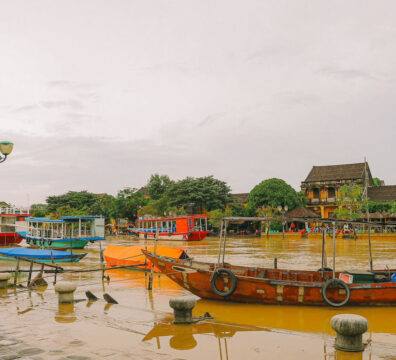
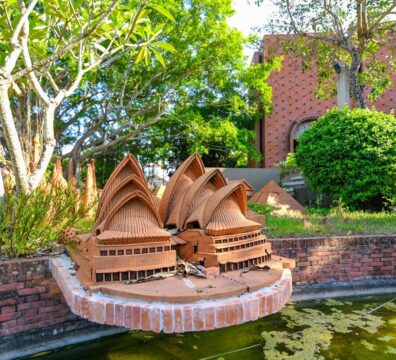




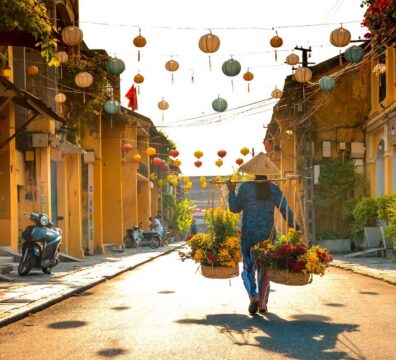


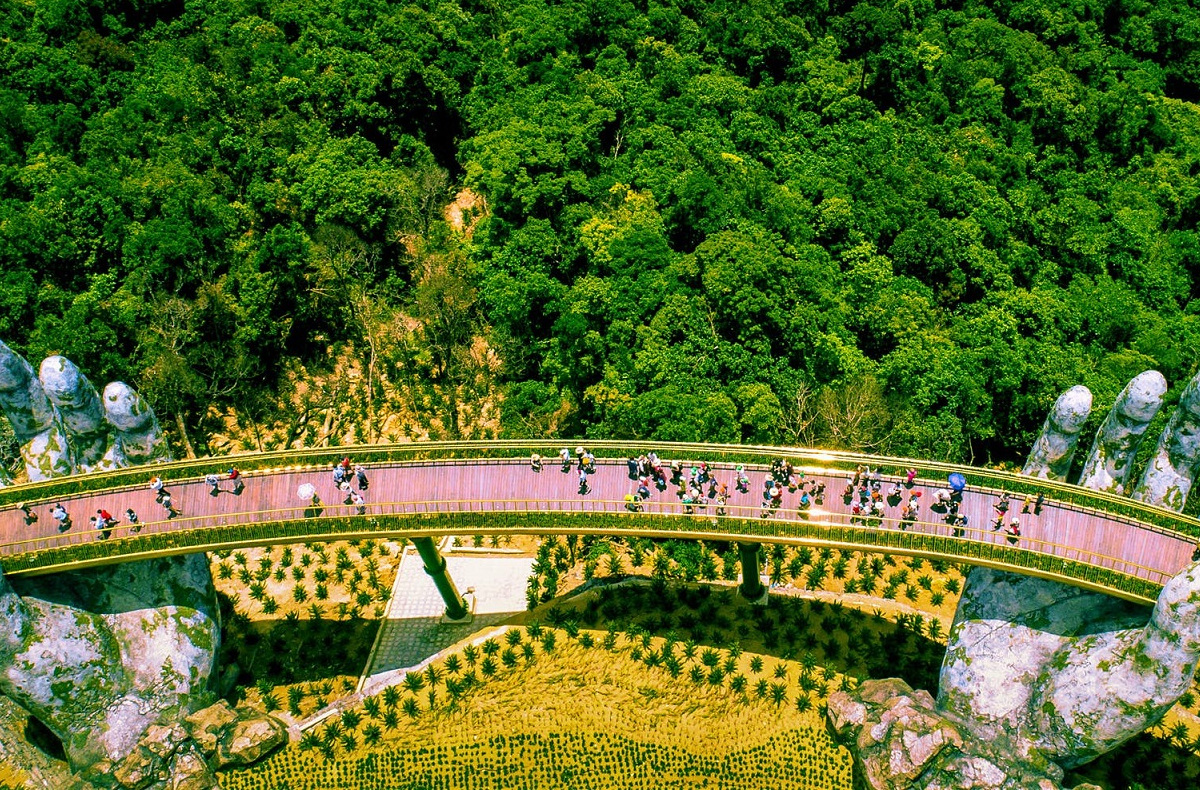
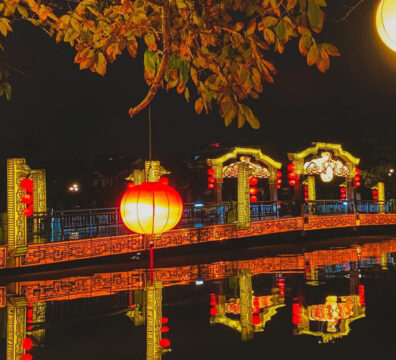

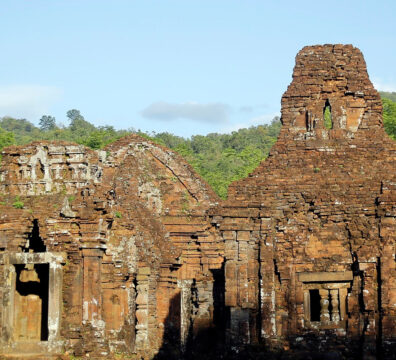


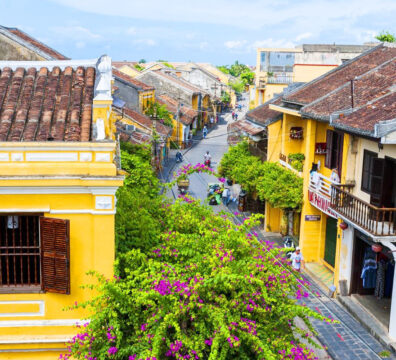










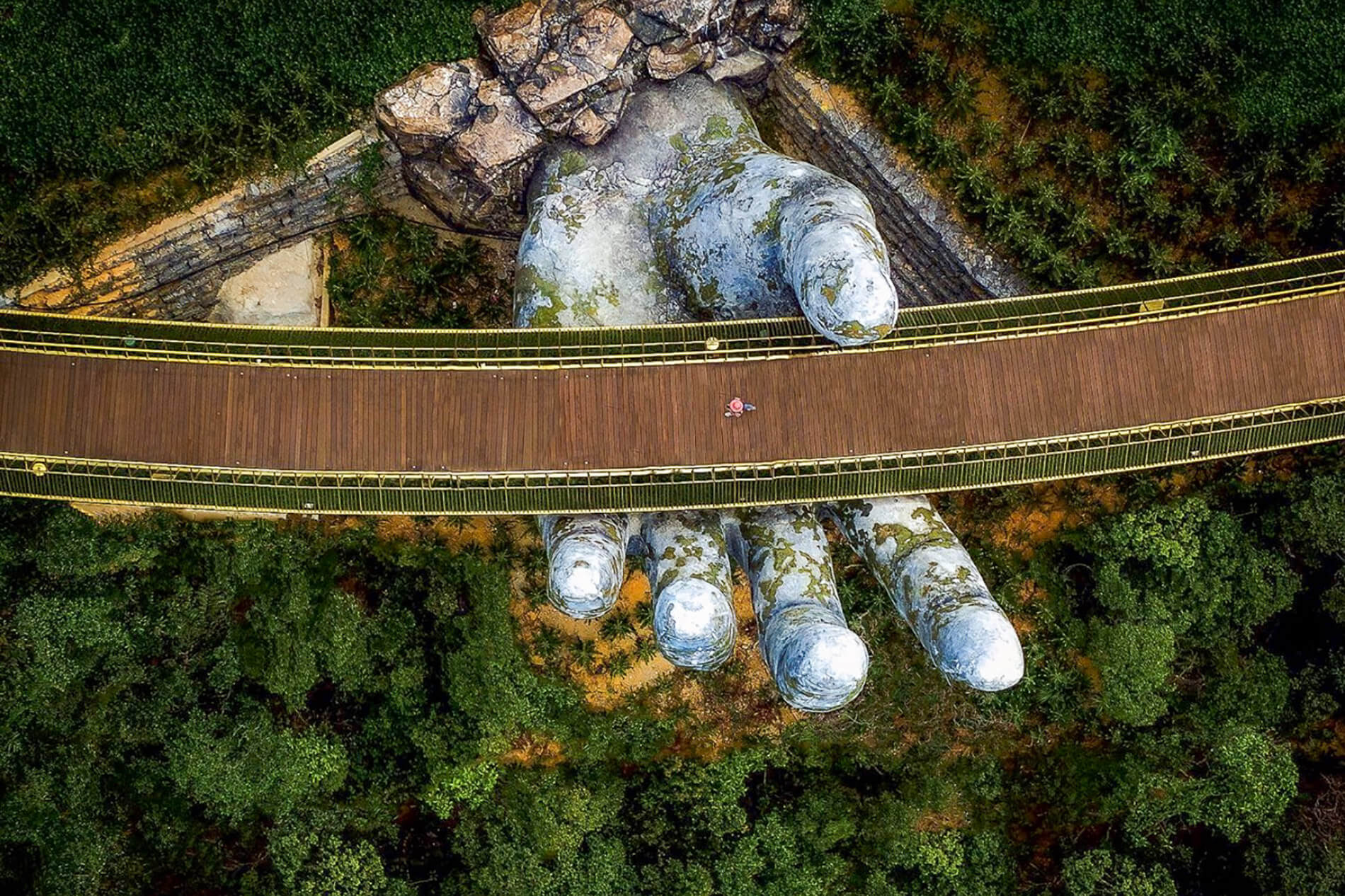



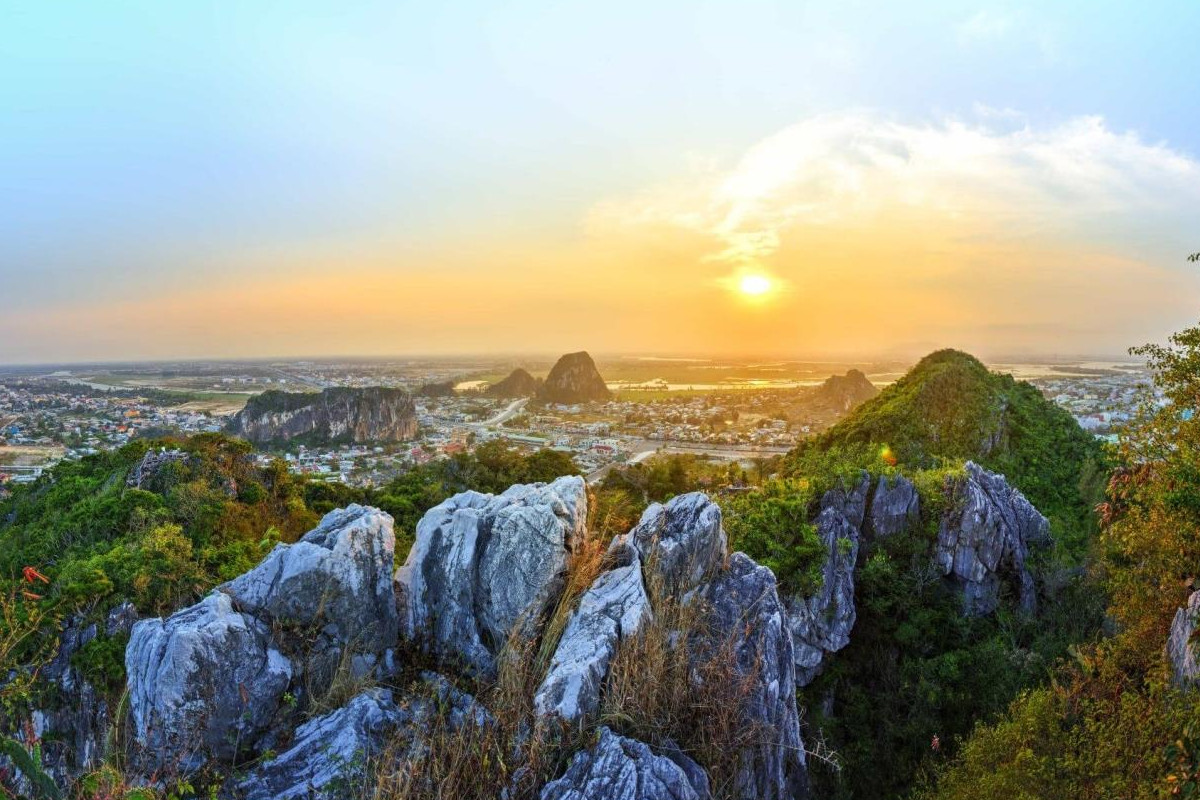





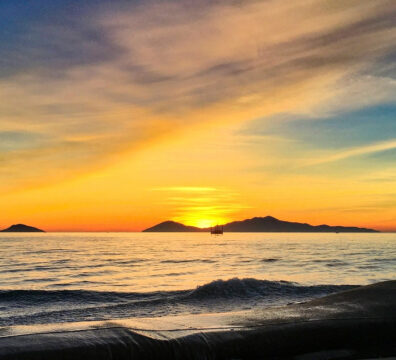





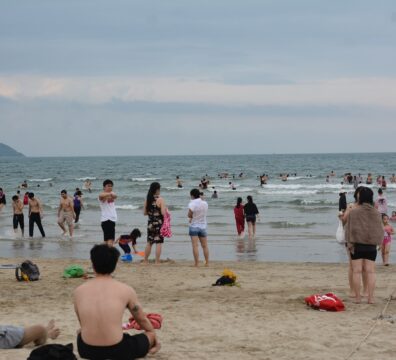

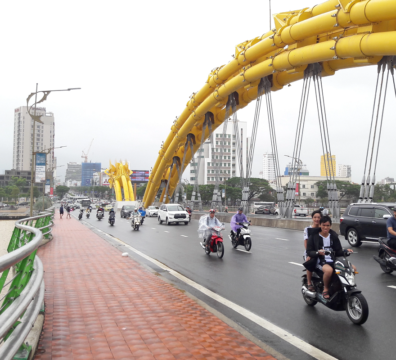









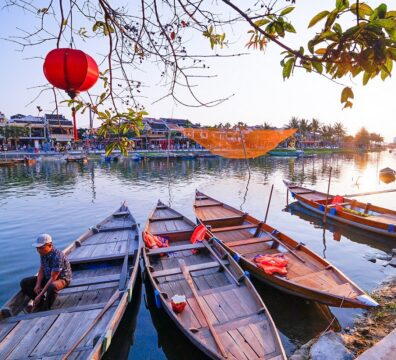


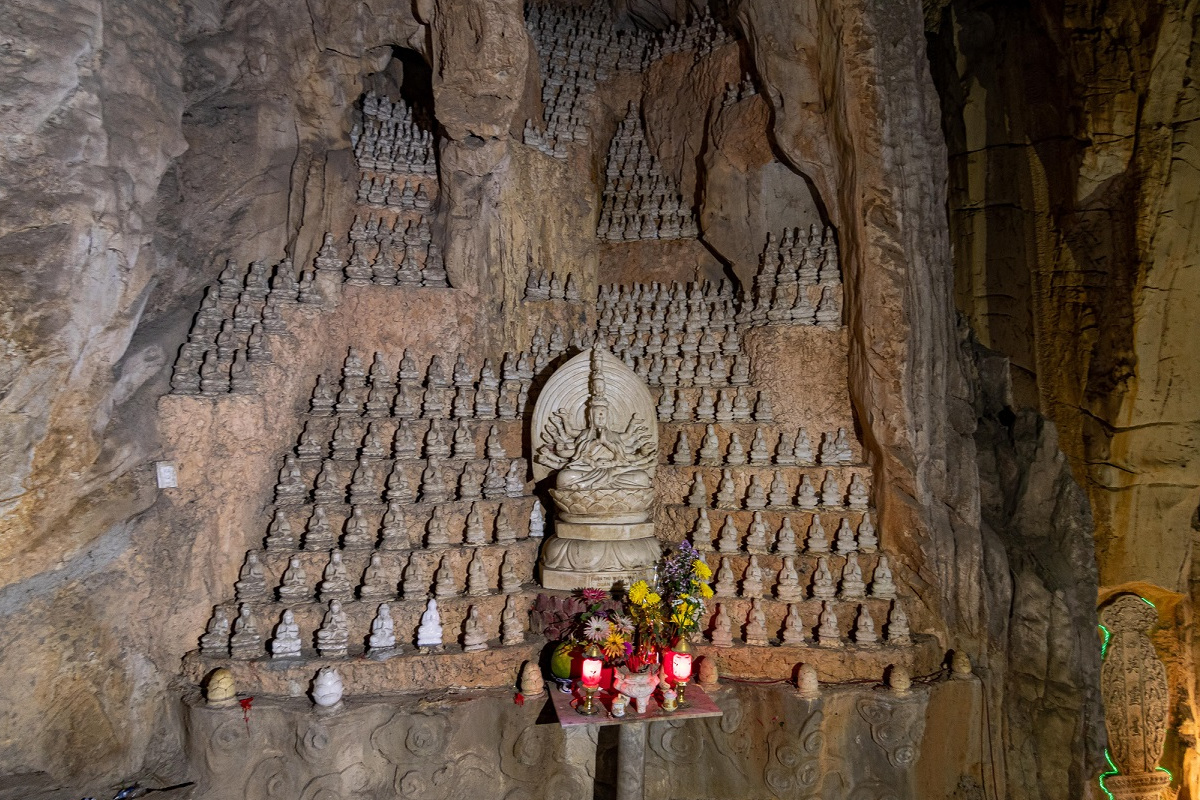






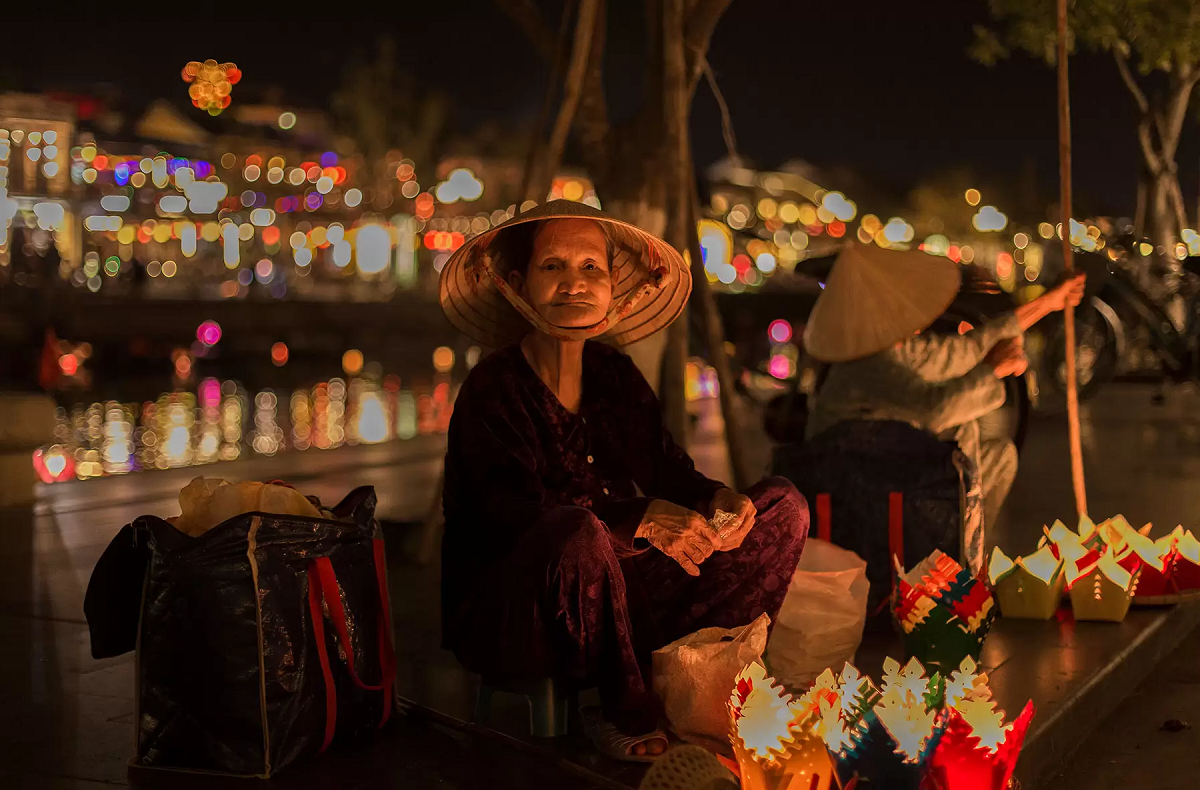






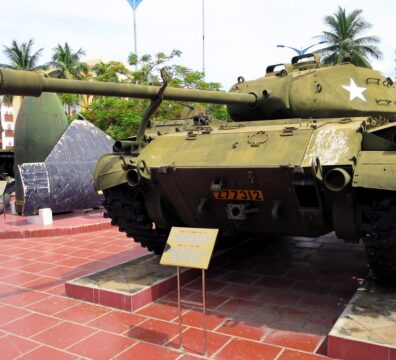

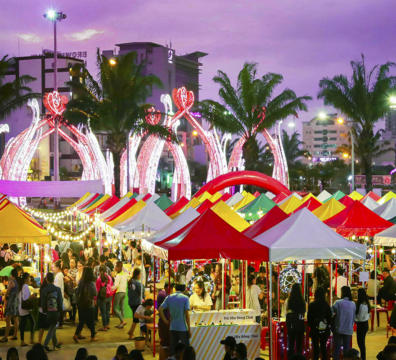






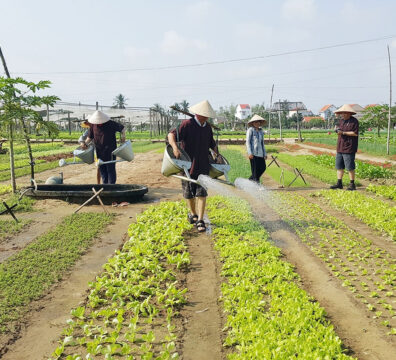

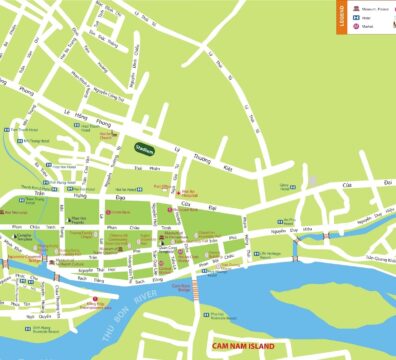

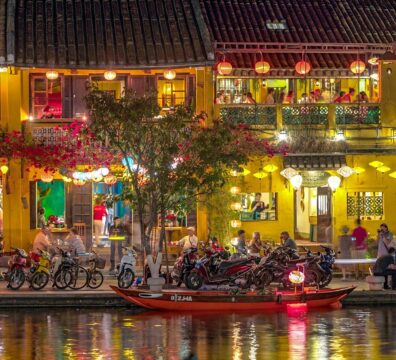
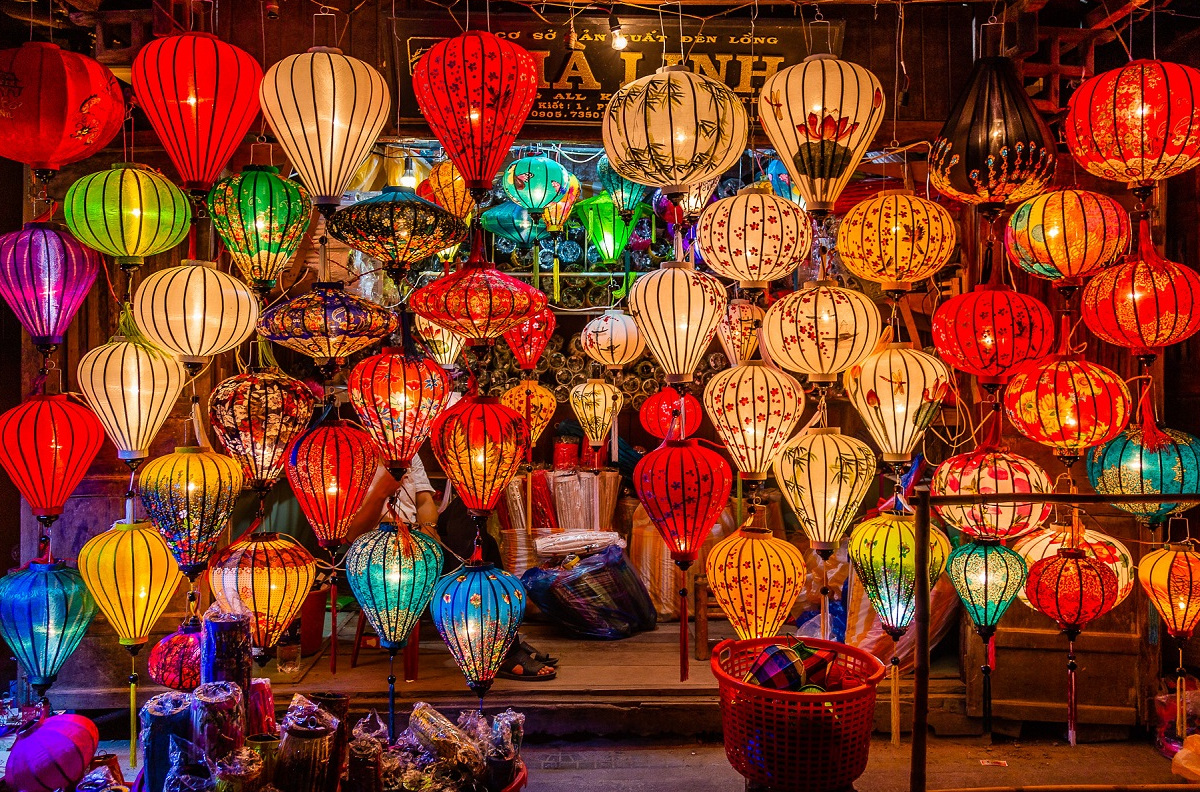










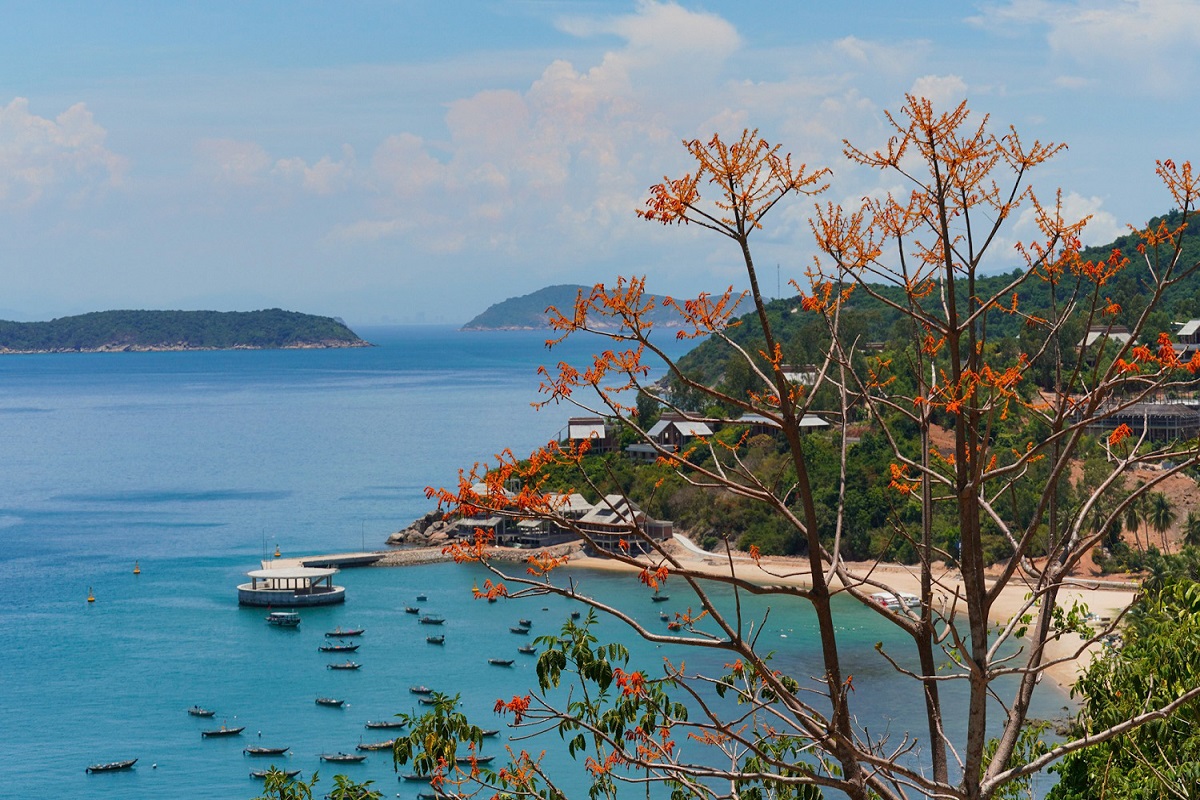







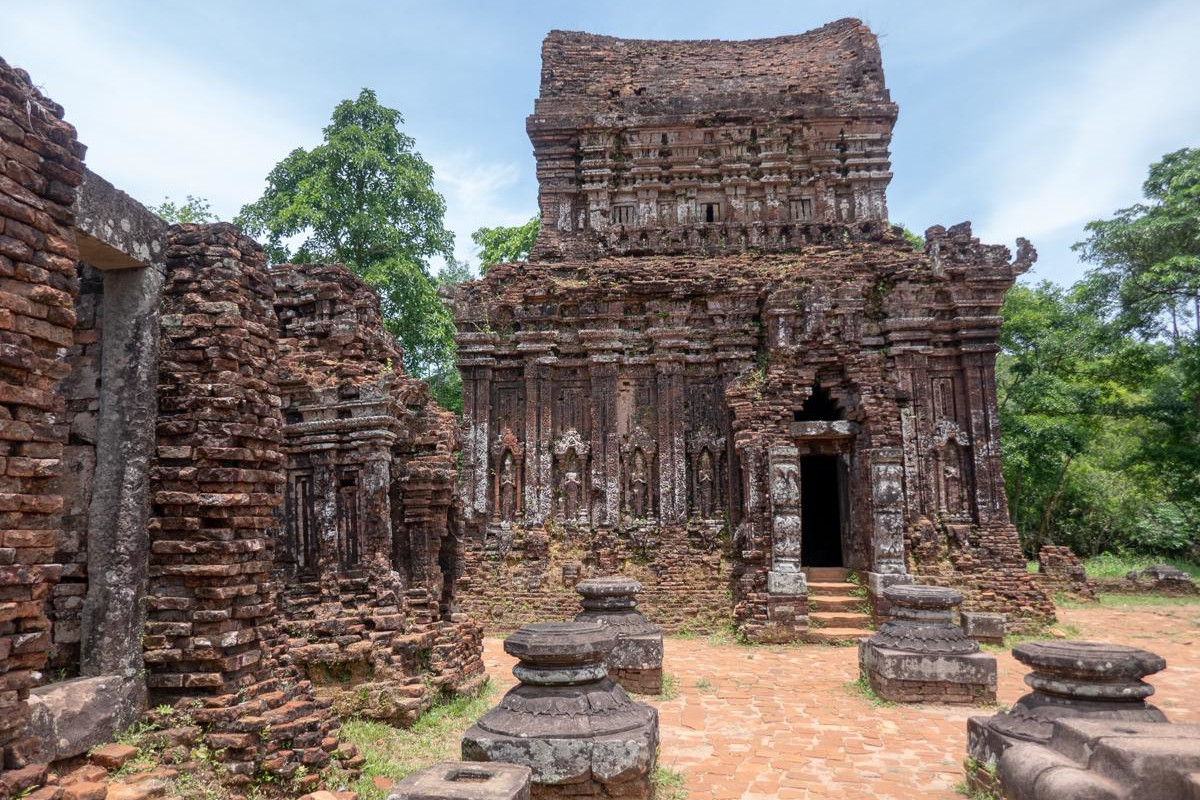

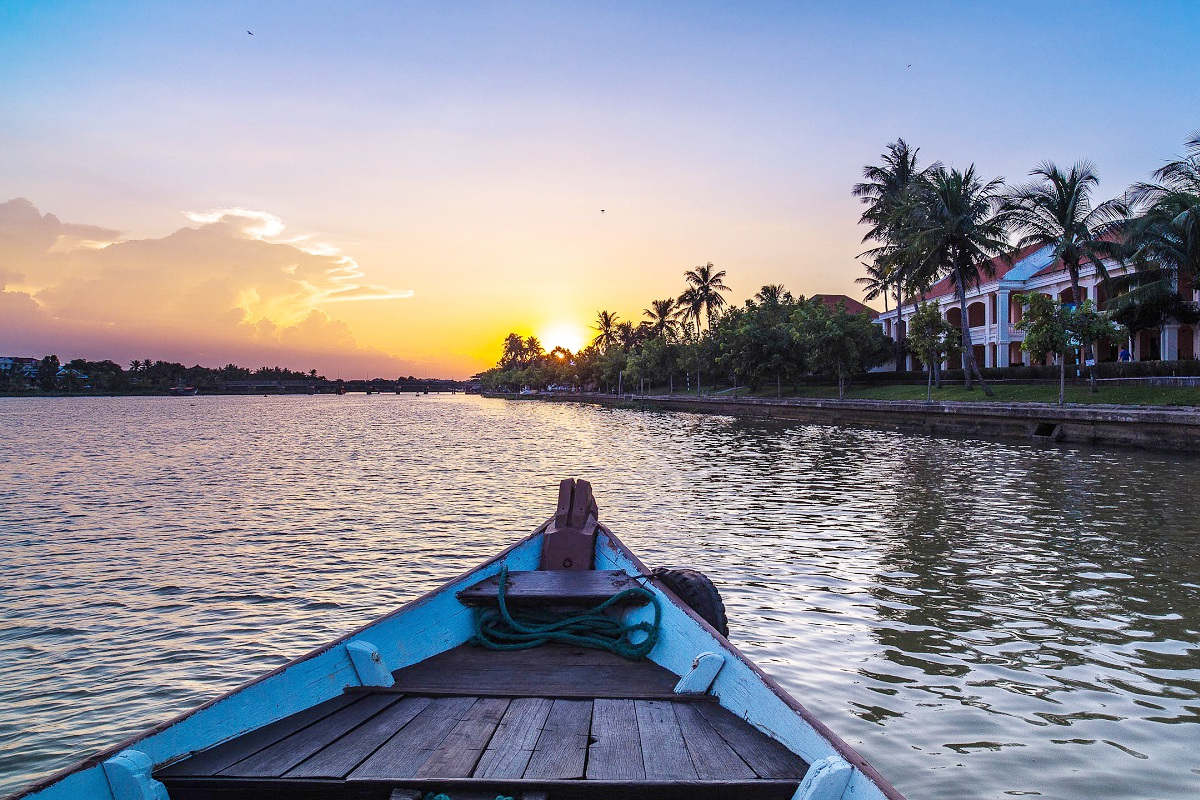





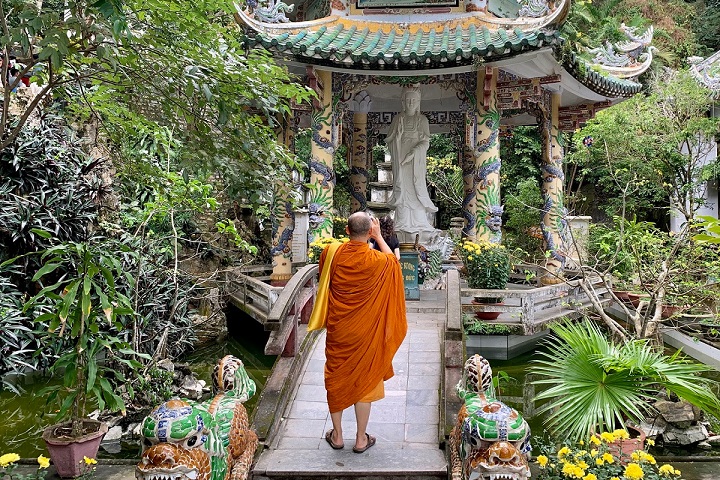
















Leave a Reply